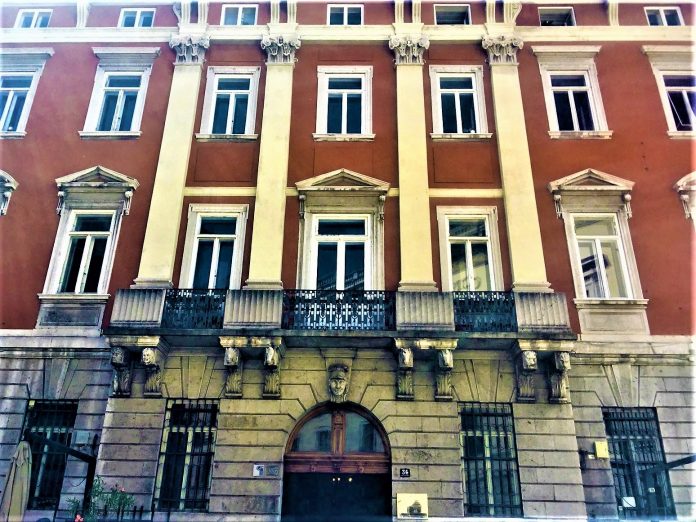by Alessandra Ressa
Most people know via Torino for being Trieste’s busiest nightlife destination, with bars and restaurants crowding the little pedestrian strip left and right. Very few, however, know that in via Torino there is one of the best preserved buildings in Trieste: Casa Mauroner.
The stone arch at the entrance, in via Torino 34, is guarded by a fierce-looking panduro, a traditional ornamental sculpture representing a Hungarian soldier. Panduri were men of the Austro-Hungarian army employed to guard the borders of the Empire.

Commissioned to the acclaimed Trieste architect Matteo Pertsch in 1821, it became the residence of Leopoldo Mauroner, owner of the popular Mauroner theater. A well-known and influential buinessman and politician, Leopoldo Mauroner strongly believed in the cause of independence, and volunteered with other Triestini at the side of revolutionary Garibaldi in the battle of Bezzacca, in the Vosges and in the battle of Dijon, where he was wounded.

In 1823, soon after construction of the palace was concluded, Mauroner rented the elegant building to Trieste’s Archbishop Antonio Leonardis and it became the seat of the bishop’s palace. Today, the beautiful entrance hall, with its marble columns and moresque crowned statue (of the Virgin Mary?), greets the visitor with unexpected beauty and refined details.
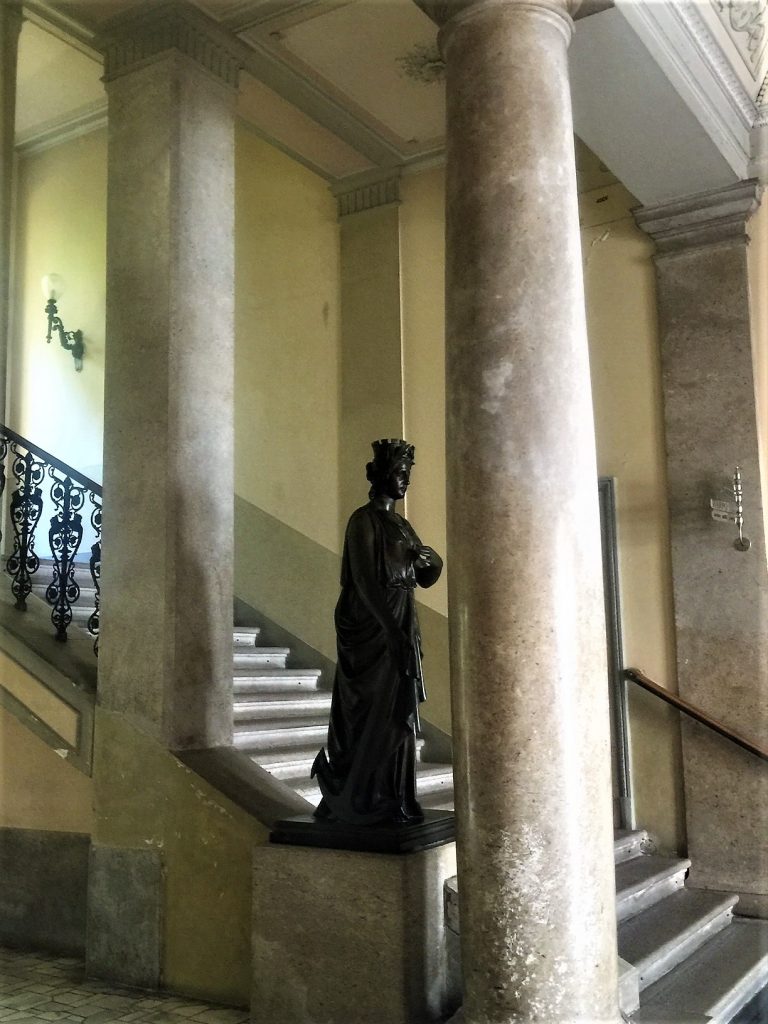
To the right, the imposing staircase surrounded by ornate ironwork climbs up, while a magnificent second door across the hall leads to a carefully tended hidden garden. The scent of jasmine dominates in Spring inside the tiny cloister, where the concierge, one of the very few still retaining this old-fashioned occupation, cares for the blooming plants while filling the watering cans from the beautiful stone fountain.
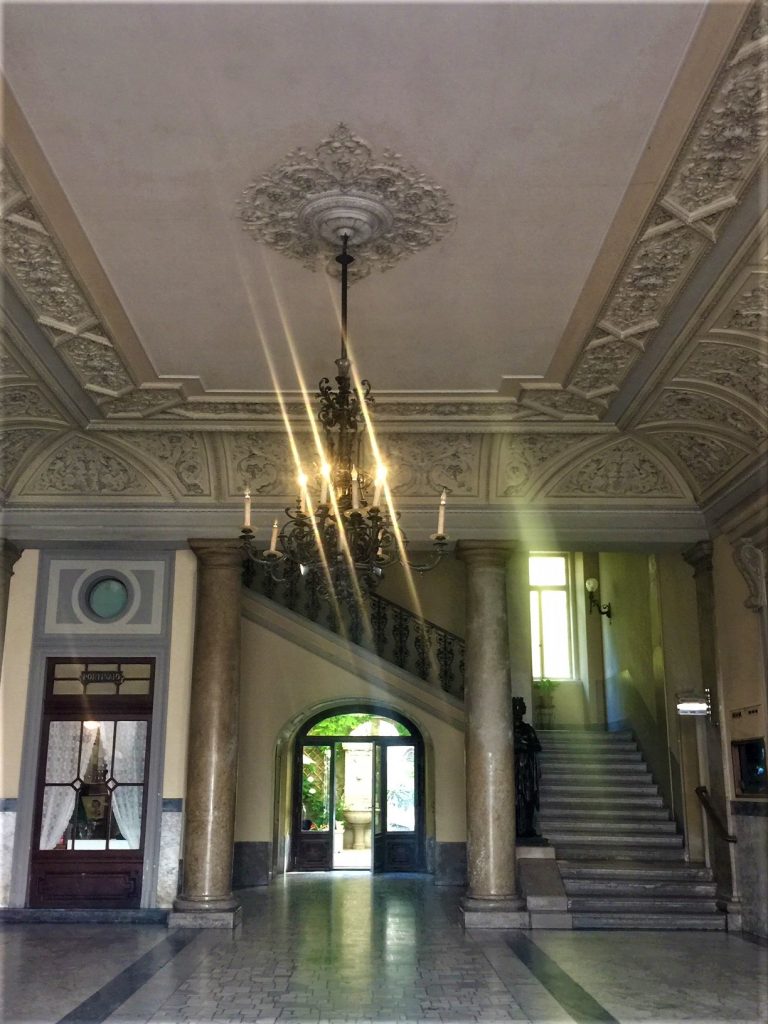
Should you be lucky enough to find the main door open (Casa Mauroner is privatly owned) or should you be bold enough to ring one of its residents and ask to be let in, look up at the finely decorated ceilings and at the tastefully matching choice of colors for frescos and decorations. Once inside, after you have marvelled at the beauty of the place, you will immediately notice to the left the little wooden office of the concierge, a bronze plaque with the inscription portinaio above it. This is quite an attraction in itself.
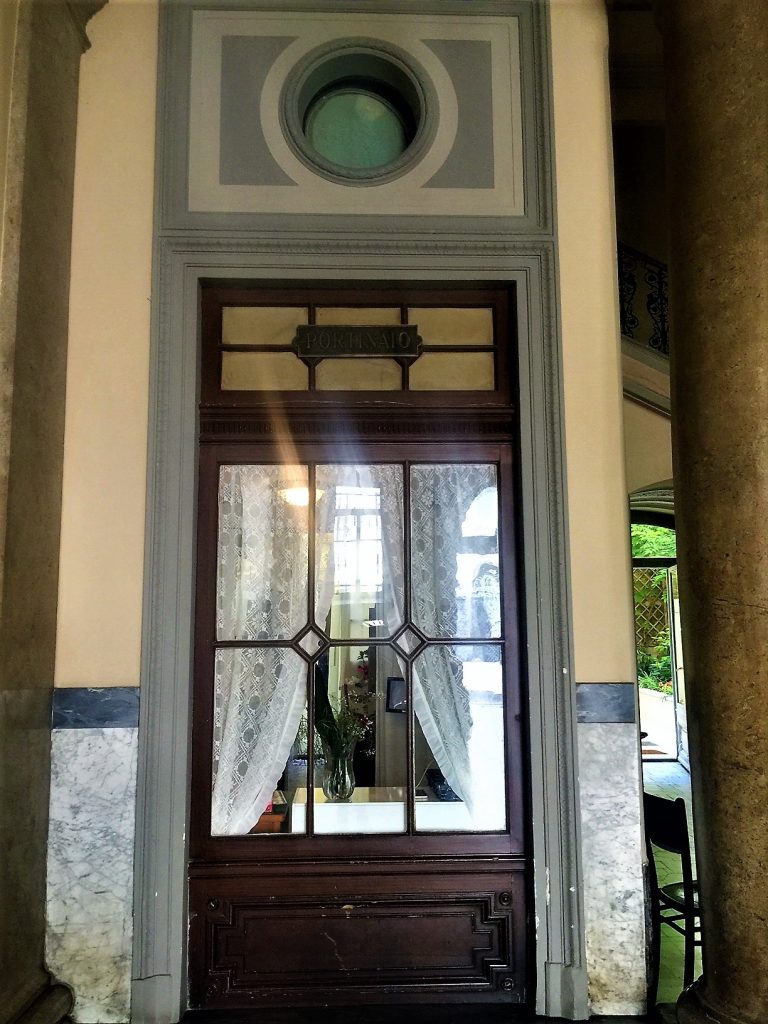
This little office is still in use and appears to have been literally frozen in time. Every detail, from the curtains to the furniture to the tray of the tiny kitchen it contains, breethes history. A history of wealth, booming economy, jazz music on the radio and sepia portraits.
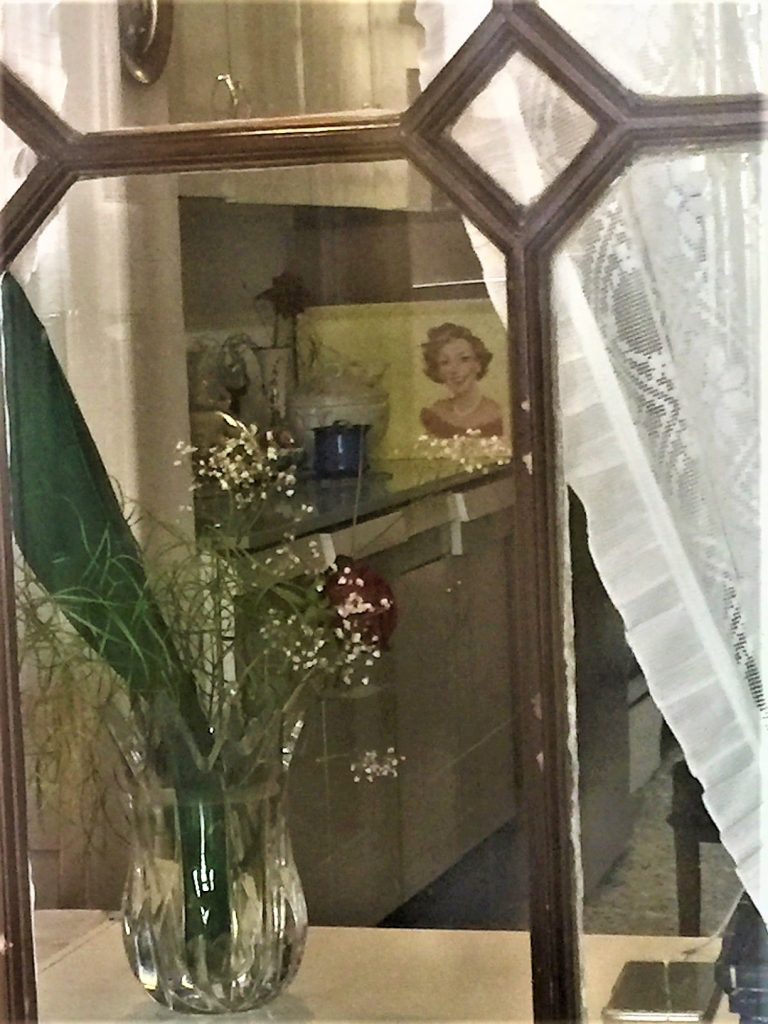
Amazed, I noticed something completely out of place added to the hall. Among the many neo-classical and austere decorations, an old but incredibly well-kept fish tank nestled in the wall displays a wide and colorful variety of tropical fish, plants, even a big anemone dancing in slow motion and what looks like live coral. The fish tank is also from another era, and the people who chose to put it there must have had a taste for the eclectic.
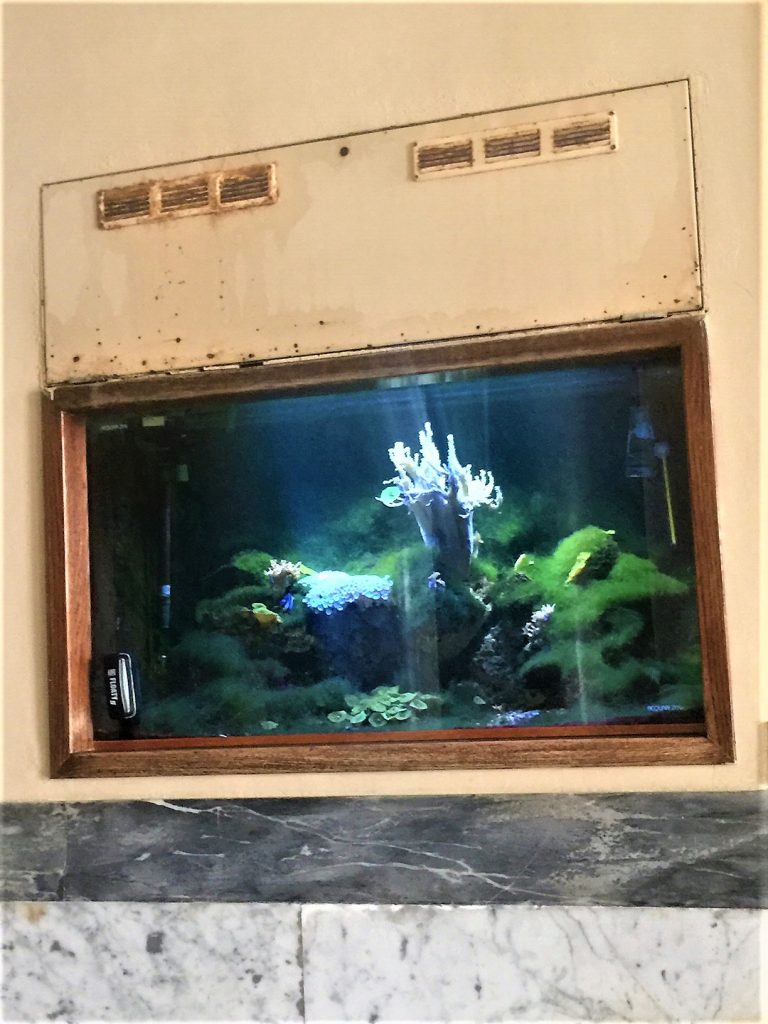
Leopold Mauroner didn’t live in this beautiful palace long. After becoming the bishop’s seat, the building was bought in 1854 by shop owner Alessandro Covacich, head of the Greek-Orthodox community of Trieste. His son Giovanni owned it until 1911. In 1918, it became the main office of the cement-export company Portland-Trieste, owned by the Stock family, who later bought the property.
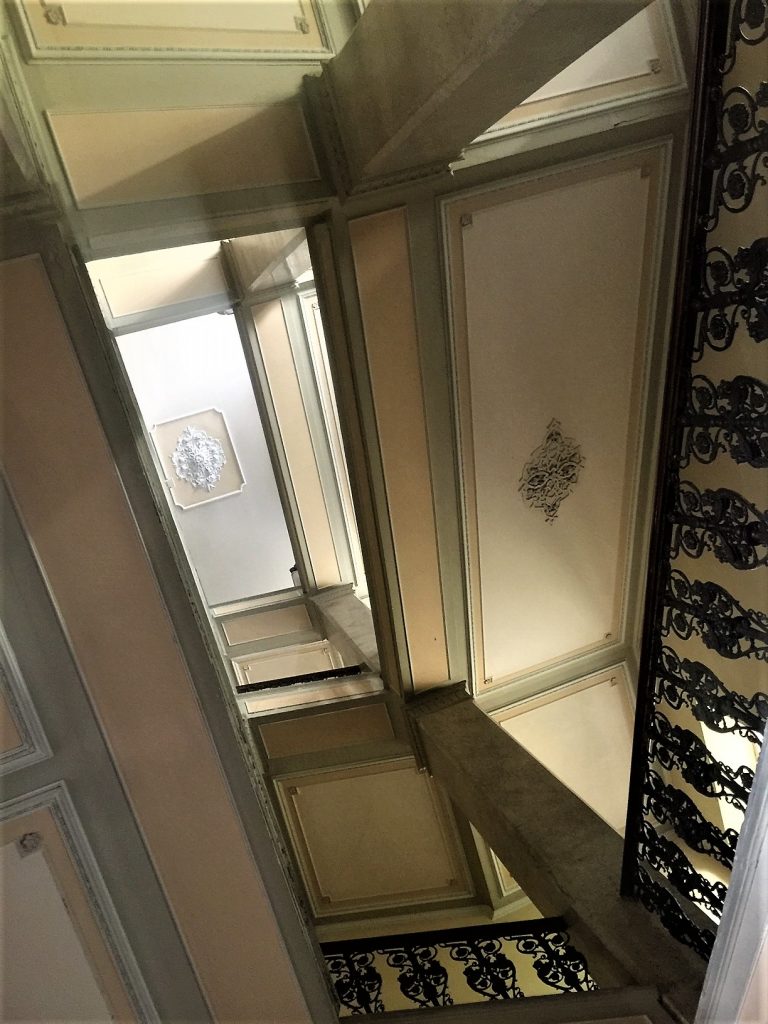
Leopoldo Mauroner was very well-known in town for his theater, located in today’s via Battisti 6 (former Corsia Stadion). It was a large amphitheater known in local dialect as “El Teatro Giazzera,” due to its position exposed to Bora winds, which made the temperatures inside extremely low in winter (in Trieste dialect, “giazzera” means ice box).
It was very popular among Triestini but known by tourists as well. It is thanks to the critique and memoirs of foreign travellers that we learn that Teatro Mauroner could host more than 2,000 people and that its audience was almost entirely made of young women from the working class, this fact alone a source of pleasure and entertainment for the few attending gentlemen.
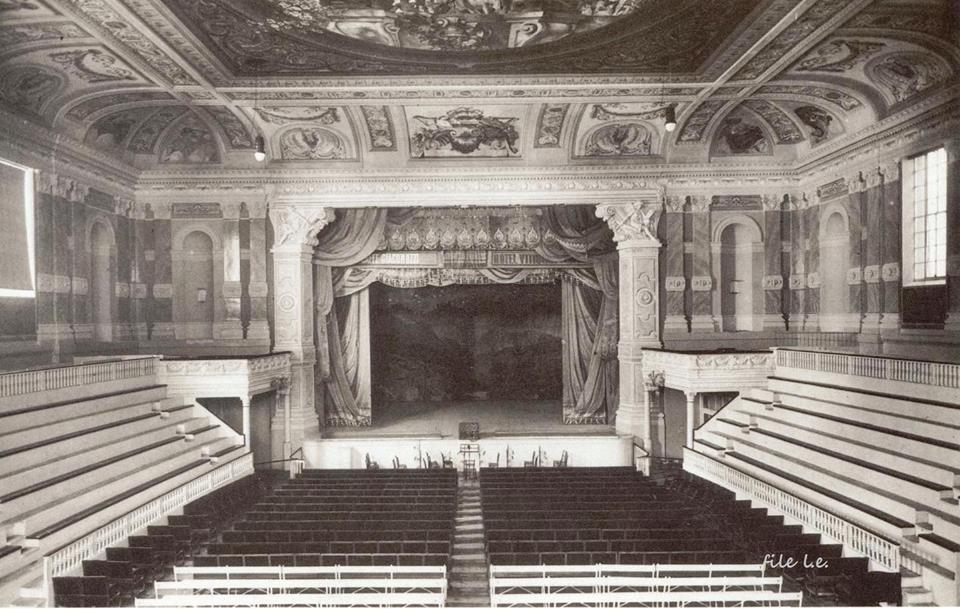
In 1876, the theater was completely destroyed by a fire of unknown cause. Three years later, another, less popular theater, La Fenice, was bult in its place. In 1954, it became the biggest cinema in Trieste, although in 1988, this was also destroyed in a fire.

























